none
none
#Introduction
#Introduction
#DigitalSimulation
#Cybersecurity
#VideoGames
#AdditiveManufacturing
#SoundSpatialization
#ArtificialIntelligence
#AugmentedReality
#Blockchain
#3DModeling
#E-Health
Guillaume Poupard
Silke Biermann
Francis Bach
Frédéric Mazzella
Christel Heydemann
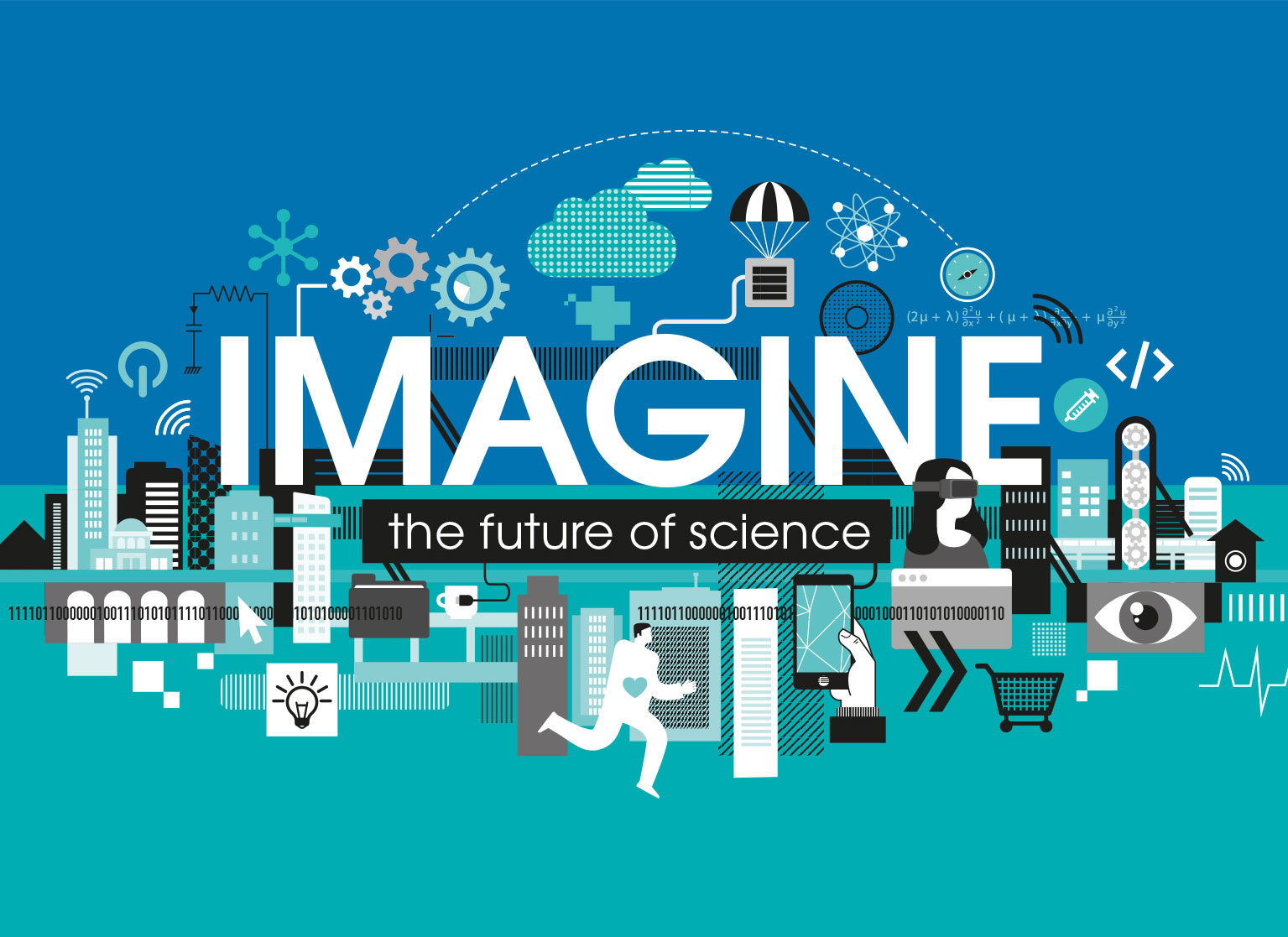
- #Introduction -
France ranks among the world’s
top leaders in mathematics, with
globally renowned universities
and institutions that produce
high-caliber scientific talent in
the field of mathematics and related
fields in computer science.
École Polytechnique has its part
in this historical tradition of excellence
that emerged during the
Age of Enlightenment, remaining at the cutting edge
of disciplines whose applications are shaking up the
world of today and tomorrow. With their tremendous
innovative potential, mathematics and computer science
are omnipresent in our society, sparking breakthrough
innovations to transform our daily lives.
École Polytechnique researchers in these different fields
work from cross-disciplinary perspectives, conducting
cutting-edge research that relies on interdisciplinarity to
arrive at new and original discoveries, advance our understanding
of the world, and design new technology.
In
doing so, they follow in the footsteps of the most illustrious
contributors of the institution’s 225-year history.
Since its creation, École Polytechnique has had, among
its alumni and professors, numerous scientists, captains
of industry, and high-ranking government officials,
whose legacy lives on.
Today, from the work carried out
by l’X researchers and students at the intersection of
various scientific disciplines, innovations are arising
across all areas of high growth, such as numerical simulation,
cybersecurity, additive manufacturing, sound
spatialization, augmented reality, blockchain, 3D modeling
and e-health.
This publication aims to put the spotlight on the undergraduate
students, PhD students, professors and researchers
of École Polytechnique for their contributions
to the world and to science.
They are the next generation
that will drive innovation in France and abroad. We invite
you to discover ten flagship projects that allow us
to imagine the science of tomorrow, as well as texts by
five experts that provide insight into the disciplines of
priority at l’X.
Through these innovative projects, École
Polytechnique reaffirms its ambition to understand and
change the world of today and tomorrow, and to focus
on subjects with a strong social impact.

- #DigitalSimulation -
Researchers from l’X and Inria have managed
to simulate a beating heart numerically and
in real time.
To achieve this, they created
a simplified reduced-dimensional model
of the 3D physical model produced four years earlier;
the latter was too complex to be applied in real time,
since it took about six hours to simulate numerically a
single heartbeat.
This breakthrough opens up prospects for predictions
in the medical field. “By integrating signals such as electrocardiograms
or pressure measurements, this model, once
it has been adapted to the individual patient’s data, could
be used as a tool to diagnose the current clinical status of
a person’s heart, and more importantly to predict future
anomalies or diseases,” explains Philippe Moireau, head of
the joint l’X / Inria project team.
In 2018, the researchers filed two patents which are currently
being evaluated.
The first is to detect day‑to‑day
abnormalities by seismocardiograms, measuring cardiac
vibrations as they affect the thorax.
This lends itself to
integration with wearables and other connected devices.
The second patent concerns monitoring during anesthesia.
As part of a partnership between l’X, Inria and
Lariboisière Hospital (AP-HP), two anesthetists are
working with the team on the application of this digital
model to monitoring.
The aim is to reduce the risk of
rare events by making use of models and data collected
in real time during anesthesia.
In the future, according to Philippe Moireau, this approach
could be combined with a predictive model and
big data to yield even more accurate predictions.
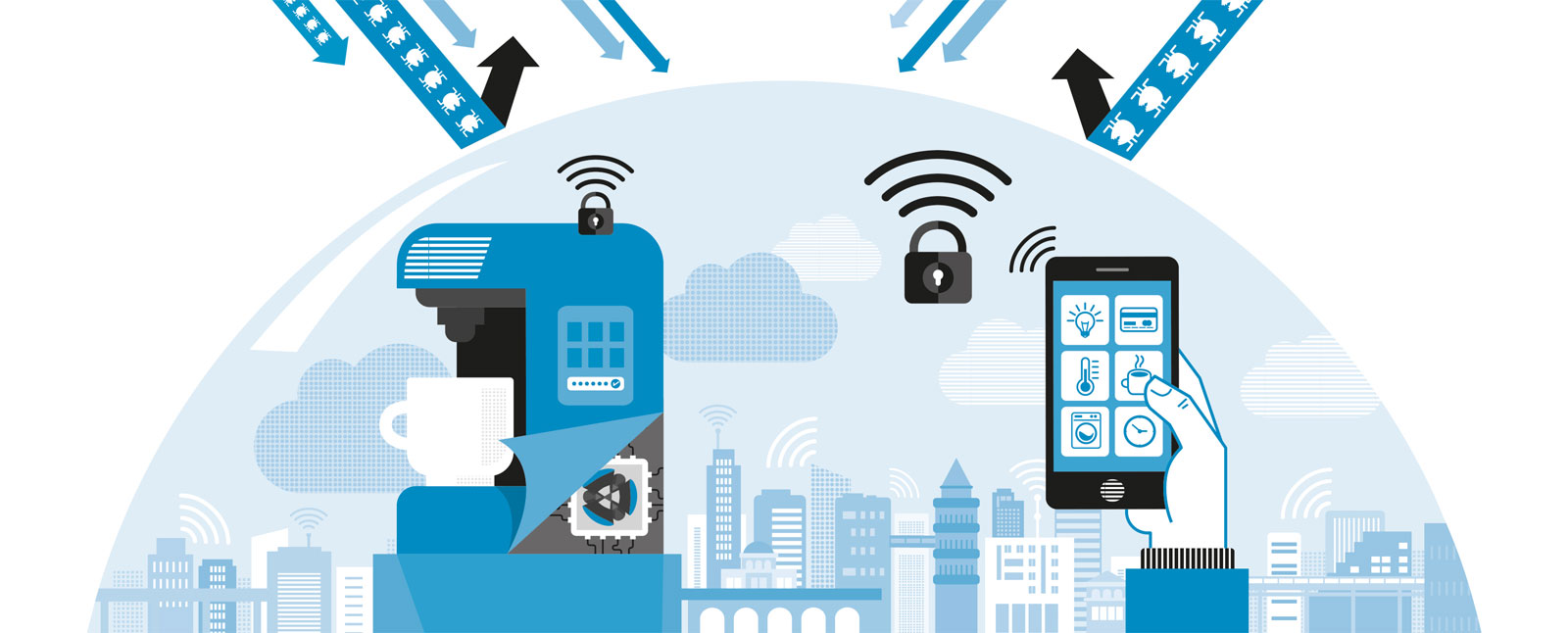
- #Cybersecurity -
With the rapid development of connected
devices, ensuring security has
become a priority.
Cryptography protects
the authenticity and integrity of
communications by preventing an attacker from interfering
with access to data, computer accounts or the physical
resources of hacked machines.
Cryptography researchers at the l'X Computer Science
Laboratory are working on new methods of ensuring the
security of communications.
When two communicating
parties need to share an encryption key, one method is
to hide it in the solution to a complex mathematical problem.
Since the 1970s, arithmetic problems were used
for this purpose but the very large keys they yielded are
not suitable for current communication tools. The new
solutions developed by l’X researchers are based on elliptic
curves whose points, characterized by their own
algebra, can be reinjected into the arithmetic problems
as if they were numbers.
This yields very concise mathematical
problems, extremely difficult to solve, which are
suitable for current devices such as cell phones.
To further reduce the size of encryption keys for small
connected devices, researchers at the Computer Science
Laboratory are studying problems that will be used in
the future, shifting from curves to surfaces, such as
Kummer surfaces, to create even more efficient cryptosystems
with compact and secure keys.
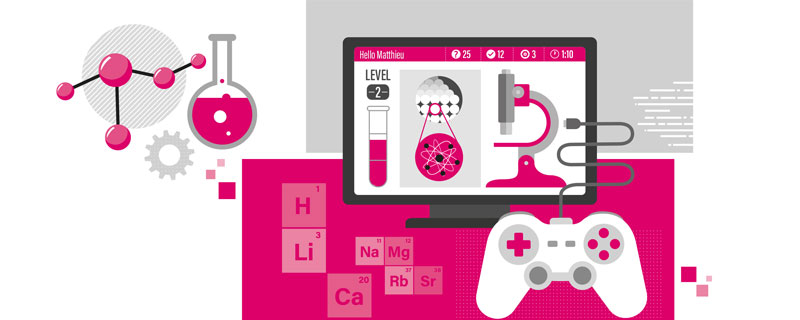
- #VideoGames -
He’d like his mobile game to become the “Candy Crush” of science.
Raphaël Granier de Cassagnac, a researcher in particle physics at CNRS,
introduced video games to École Polytechnique.
Research director at the
Leprince-Ringuet Laboratory, he works with a small team of designers
and artists to develop a game dedicated to particle physics.
The idea of this game is to immerse players in a "fantasy" universe where they explore
the world of elementary particles.
“As they progress, they discover one by one the bricks of
the standard model, making machines, using telescopes, and observing particle showers,”
explains the physicist.
In addition to his role as a scientific expert, Raphael Granier de
Cassagnac co-wrote the script for the game. For many years, he has also been writing
science fiction novels, role-playing sketches, and different film projects.
At the same time, he has been active in a joint project between École Polytechnique
and Ubisoft, creating a research chair in “science and video games.”
Signed in early
2019, it aims to introduce more science into video games and train professionals by
offering new courses at l’X. “It could be a game design or storytelling course in the context
of human science education, or a course geared towards game engines in connection with
computer graphics and 3D animation,” he explains.
Another aim of the chair is to study
education methods through the use of games and bring together scientists and industry
at a symposium devoted to science and video games.
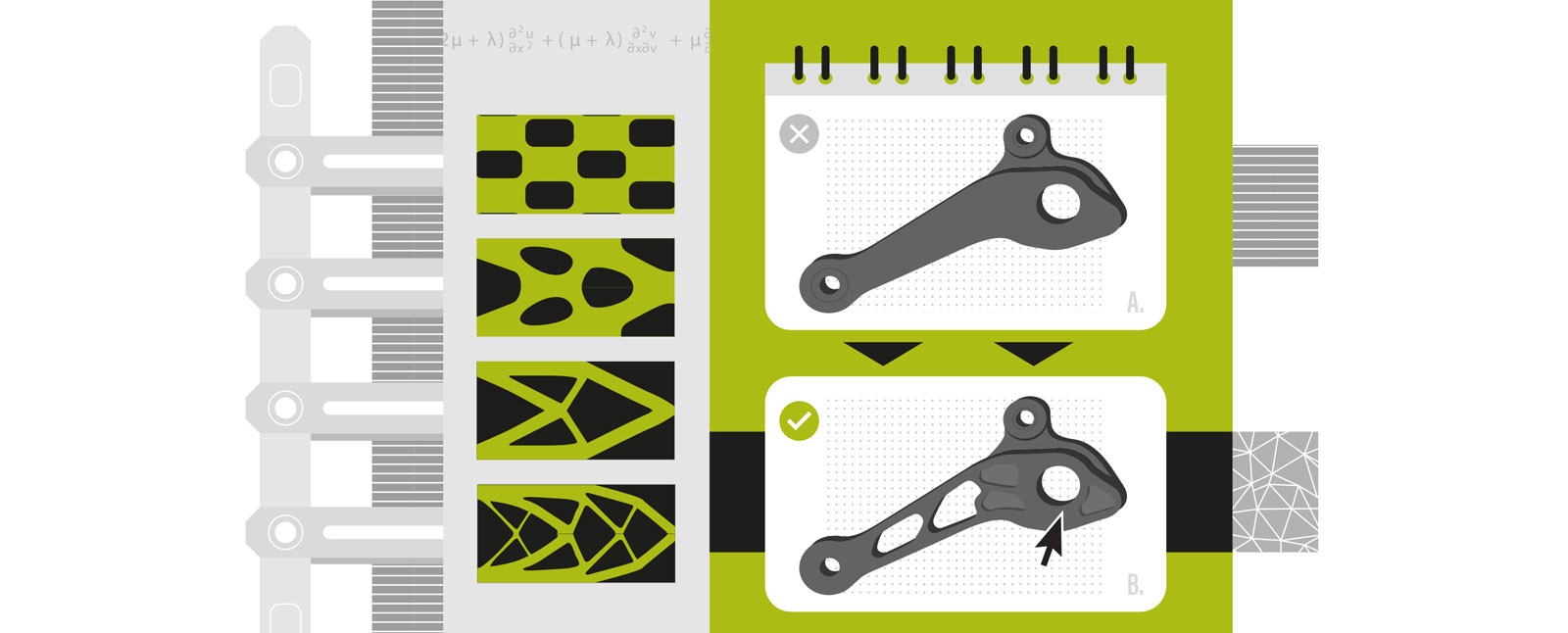
- #AdditiveManufacturing -
The success of 3D printing has led to growing
interest in the shape and topology optimization
algorithms developed by École Polytechnique’s
Center for Applied Mathematics.
These algorithms, used to optimize the design of industrial
parts, have been around for some twenty years but
their field of application was limited, until recently, by
traditional manufacturing processes.
“The inventiveness
of the algorithms was limited by the need to respect such
design constraints as demold restrictions,” explains mathematician
Grégoire Allaire, a specialist in structural optimization.
Thanks to additive manufacturing, especially
metal AM, components created by these algorithms,
which were previously too difficult to build, are now
conceivable.
But this new freedom goes hand in hand with novel
constraints. “The process, which consists of melting at high
temperature successive layers of metal powder using a laser
heat source generates constraints linked to the risk of deformation
when the metal cools,” says the mathematician.
To counter this risk, optimization software starts from
an initial shape and calculates, through an iterative
process, a better solution than the previous one. This
software works to minimize deformations and improve
such criteria as the weight of the structure, its strength
and the resistance of the materials, until the best possible
shape is generated.
These metal additive manufacturing processes are paving
the way for new, original applications, but some obstacles
subsist, including cost.
To address this, l’X is participating
in the Sofia program, alongside industrial partners
and academic institutions, to provide research tools that
contribute to the development of the French metal additive
manufacturing sector throughout the world.
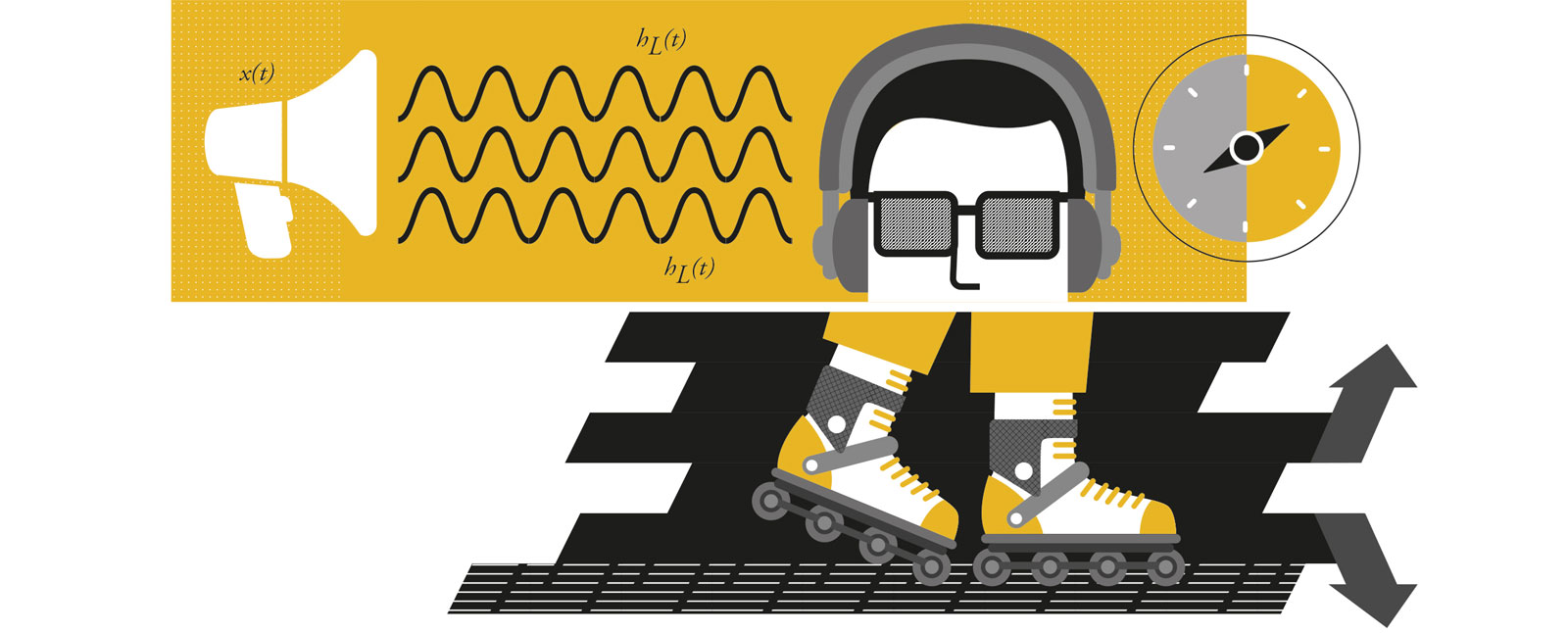
- #SoundSpatialization -
Researchers in applied mathematics have developed a new type of audio
navigation technology for the visually impaired.
The goal is to make it
possible for the latter to practice sports with near autonomy. Using simple
headphones and the 3D sound spatialization software, they can follow the
movement of a sound object in space.
Complex mathematical calculations were used to precisely model the functions for the
construction of a realistic sound space. By numerically calculating the propagation of
sound waves in a given environment, say an auditorium, a historical monument, or
the human ear, mathematicians strive to reproduce the characteristics of waves in each
point of space.
Coupled with a positioning system on the head and body, the software can help the
blind navigate safely.
During experiments conducted in partnership with the NGO
MixHandi Cap sur la vie, Stéphane le Sueur, a blind athlete, managed to run and
rollerblade by following a virtual sound guide in front of him.
This research is meant
to enable the visually impaired to practice sports activities with greater autonomy and
thereby offer a solution to an important social problem.
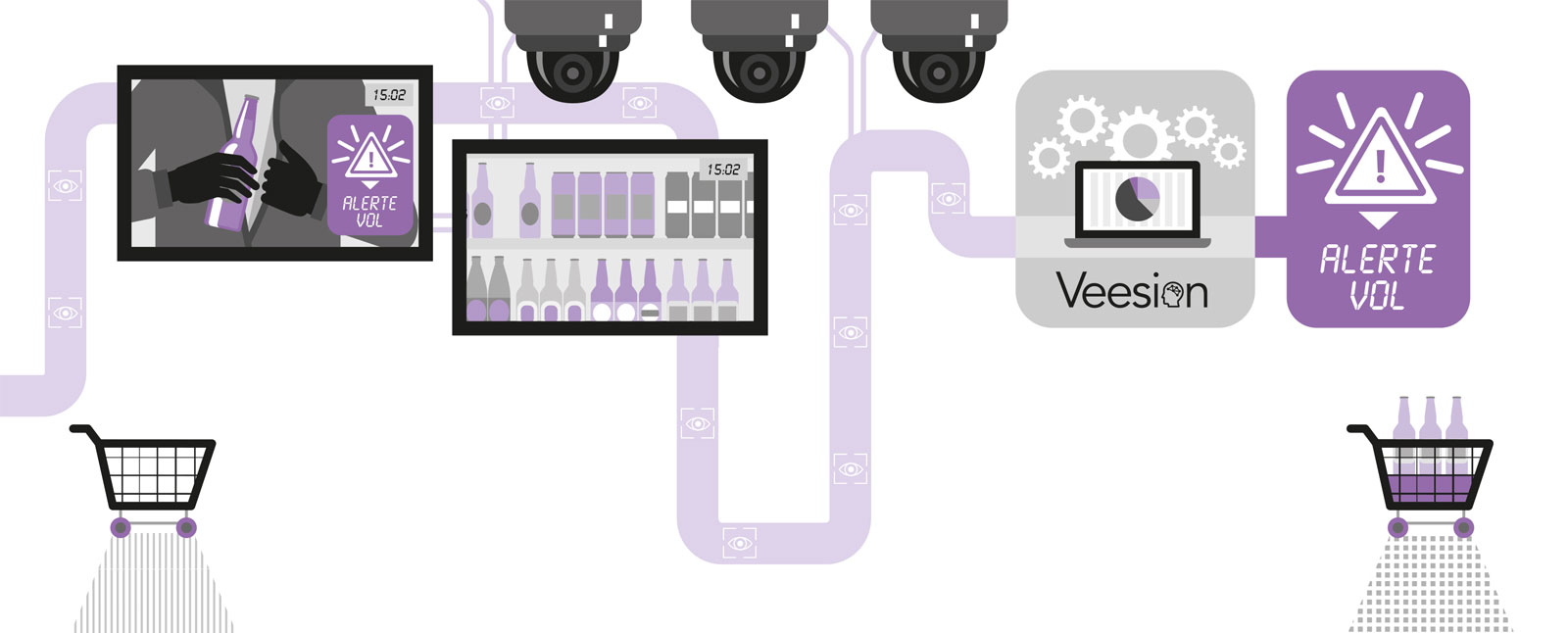
- #ArtificialIntelligence -
The cost of losses due to shoplifting in the
retail industry is estimated between
1% and 2% of turnover, representing
$120 billion per year in the world.
Three students in the Data Science for Business joint
l’X/HEC master’s program decided to help retailers
tackle this problem.
They created the start-up Veesion
to market their video gesture recognition technology,
an artificial intelligence program they developed to
automatically detect thefts in real time.
“Our technology
is based on a deep learning algorithm, a technique that uses
neural networks to analyze sequential images,” explains
Thibault David, co-founder of Veesion.
Their artificial
intelligence can connect images together to identify the
sequence of movements.
A large store with a hundred cameras commonly
invests up to several million euros is video surveillance
systems, which are not cost-effective given the low
rate of shoplifting actually avoided.
“An operator can
simultaneously process the images of up to six cameras, but
they are being asked to analyze images from a hundred
screens,” says Thibault David.
The start-up proposes
a human-machine interactive system, with an AI
filter that continuously analyzes all of the screens for
theft probability, and only alerts the human operator
in the case of a sequence with a high probability.
Their technology will be deployed in France and
internationally in 2019.
The team plans to continue its
research on video motion detection by recruiting PhD
students to improve its software.
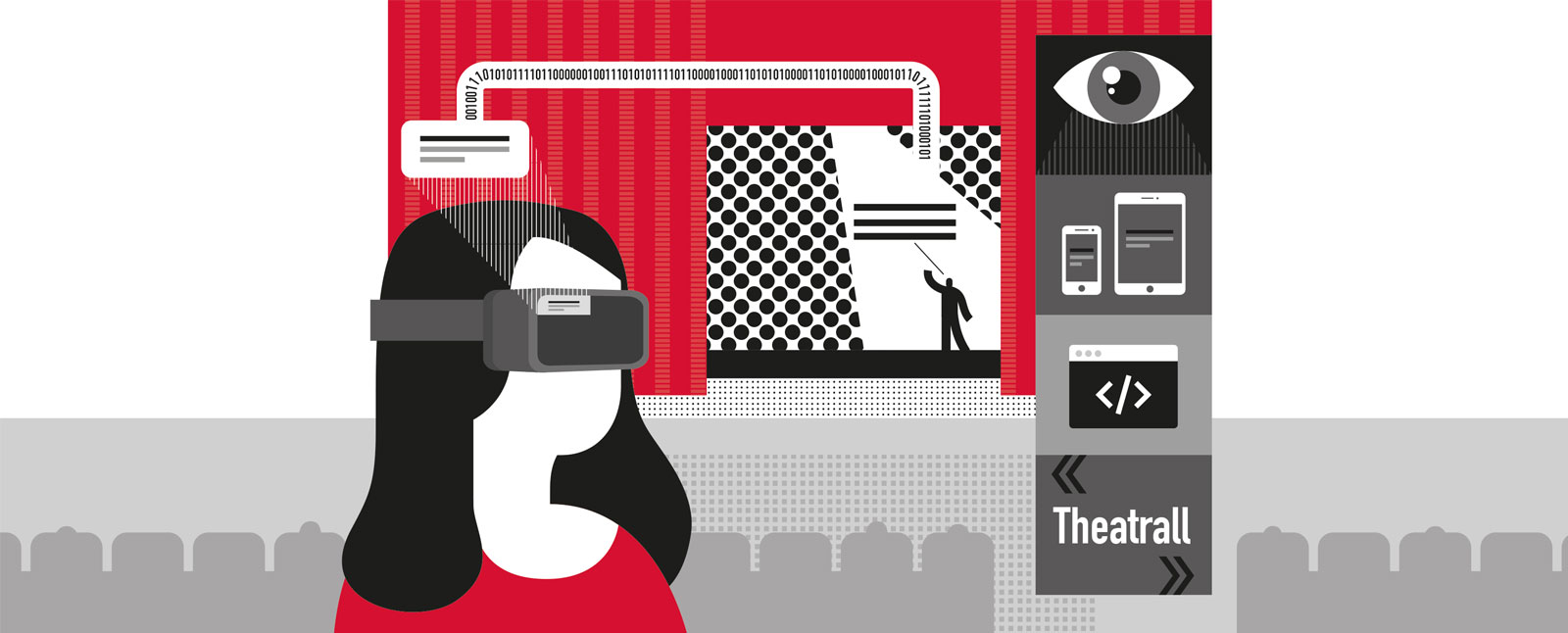
- #AugmentedReality -
Five students from the Ingénieur Polytechnicien
Program have launched the start-up Theatrall
which proposes individualized, automated
captioning of theatrical performances in real
time.
Their innovation grew out of a second-year group
science project and won the French final of the Microsoft
Imagine Cup 2018.
It is based on voice recognition.
“Our algorithm can listen to the actors, understand the
overall meaning of their words, situate it in the script and
communicate it to viewers in the language of their choice,”
says Daniel Huynh, one of the founders of the start-up.
Based on artificial intelligence, the system is designed
for use by the hearing-impaired, among others.
The
program is available through an app on a smartphone or
tablet or on smartglasses for the display of surtitles.
This innovation, which has already been tested in partnership
with the Comédie Française, is likely to interest many
other institutions. The system has already attracted the
interest of a luxury brand and the students are thinking
about applications abroad.
“The musicals market is very well developed in England, and
the appetite for theater is very widespread in Germany and
Italy too,” says Daniel Huynh who also plans to provide
the system to movie theaters to reach foreign audiences.

- #Blockchain -
Fifteen years ago, before the concept even
existed, professor of innovation management
Thierry Rayna was already working on a forebear
of the blockchain.
Nowadays, his research
is devoted to studying the impact of digital technologies
on business models.
After studying other emerging technologies,
such as cloud computing, 3D printing and the
IoT, his research now focuses on assessing the relevance
of use cases of blockchain for companies.
Although each
type of digital technology is unique, it is still possible to
find common trends.
Nowadays, consumers have increasingly become producers;
they create digital content by putting videos and
photos online, deliver services by renting out their apartments,
and in the future 3D printing will even enable
them to manufacture objects. But for that to happen, a
trusted intermediary needs to emerge.
Blockchain frees
them from this burden, leading to far more opportunities
(and challenges).
By accelerating the emergence of
new markets, blockchain causes disruption and shakes
up existing markets. “For start-up companies, it provides
enormous opportunities that do not necessarily involve
competing head-on with, but rather circumventing
already established players in their market.
The latter,
as a result, will be faced with a need for transformation
and to adapt their skills and products to these new uses,”
explains Rayna.
Bearing this in mind, he has developed a diagnostic
tool to assess digital technologies and their impact on
existing business models.
The aim is to grasp both the
technology and the market ‘rules’ while
establishing a connection between the
two to anticipate the disruptions likely
to occur with the emergence of a technology.
Because sometimes, there is no
need to actually use a technology for
a disruption to occur; the mere threat
may suffice.
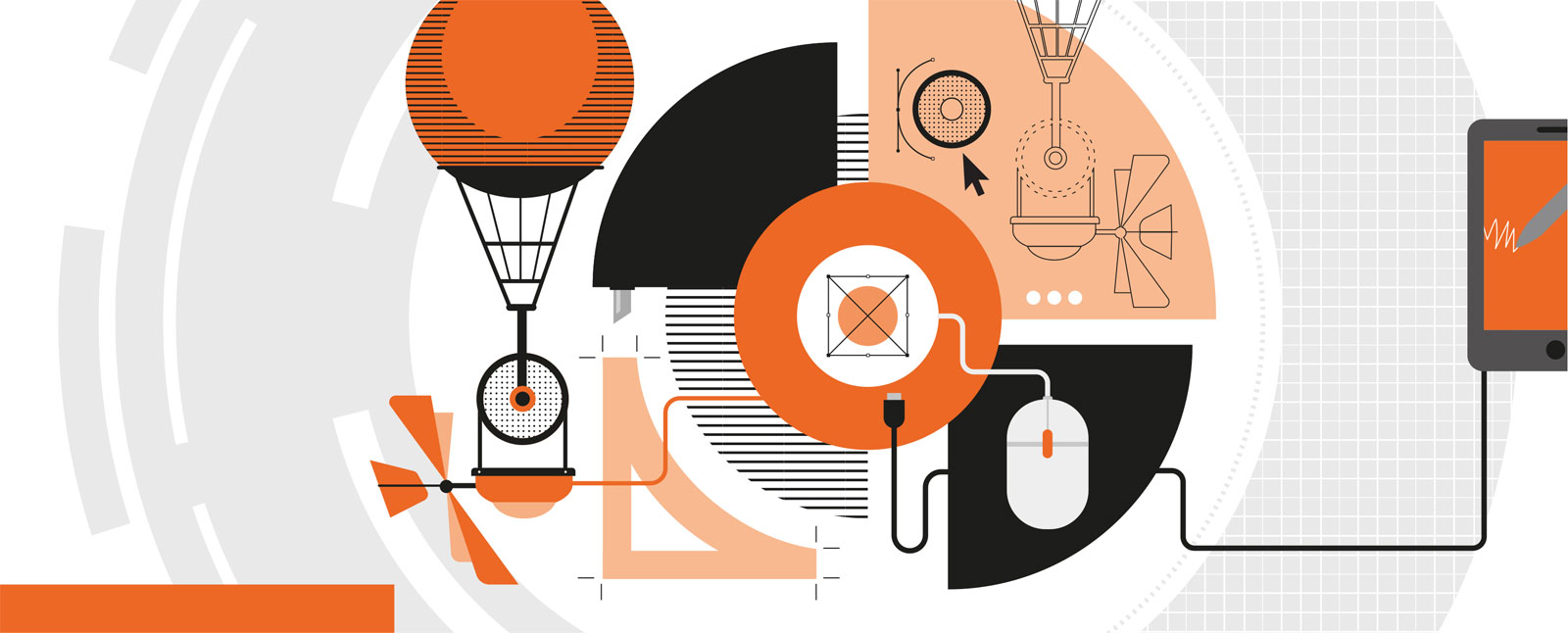
- #3DModeling
Leonardo da Vinci, Clément Ader and the
Montgolfier brothers all shared an interest in
designing flying machines.
Over the past two
years, second year l’X students have been devising
their own flying objects, modeling them in virtual
and then printing a 3D prototype during lab sessions
as part of an Applied Laboratory Module (ModaL).
“This module relies on advances in computer graphics
towards virtually modeling and then materializing an
imaginary shape.
It draws on video games and special effects
while addressing a key engineering issue: representing
and animating a mental picture,” comments Marie-Paule
Cani, Computer Science professor at l’X and head of the
module “Expressive modeling for 3D manufacture.”
These sessions led last year to the creation of spacecrafts
inspired by Star Wars, the films of Hayao Miyazaki, or
nature.
Using selft-designed computer-aided creation
software, based on a form of artificial intelligence called
“creative AI’, the students sketched their concept and
then “sculpted” it virtually in 3D.
The principle involves
coding the knowledge needed to infer a 3D model
in real-time from a 2D sketch, to deform it and to add
details using hand gestures.
This methodology is being
designed by Marie-Paule Cani and her team at LIX in
their research.
For example, their mountain sculpting
project, accessible at Mus’X, École Polytechnique’s museum
space, utilizes geological constraints, such as the
motion of tectonic plates or erosion, for users to animate
in real time through hand gestures the formation and
evolution of a mountain range.
Students in this module thus have the opportunity to
gain a firm grasp of research being conducted in the field
of expressive 3D modeling.

- #E-health -
It is estimated that nearly 640 million adults
will have diabetes by 2040.
The start-up Healsy,
with the help of École Polytechnique’s start-up
accelerator, has developed the first mobile platform
to help people with diabetes to make their own
treatment decisions.
This is important because blood glucose measurements
alone do not suffice for an individual to determine the
right dose of insulin.
As co-founder Nicolas Caleca
(X2004) explains, “there are so many factors to consider,
including meals, physical activity, stress levels, alreadyinjected
insulin, that diabetics make mistakes, which may
cause dramatic short- or medium-term complications.”
Healsy's goal is to provide patients with the information
they lack –that is, the prediction of changes in their
blood glucose levels.
To make this prediction, patients
connect their smartphone to their devices –blood
glucose sensors and insulin pump– and to an activity
tracker.
“On the basis of all this data, the app can simulate
the evolution of blood glucose using a mathematical model
coupled with artificial intelligence that we develop,”
says Nicolas Caleca. A first version of the app will
be available on the market in 2019.
To help the startup
develop its technology, as part of their second-year
science project, École Polytechnique students designed
a glucose monitoring and treatment armband providing
patients with continuous glucose levels in real time on
their smartphone, then Healsy built a database with the
information collected.
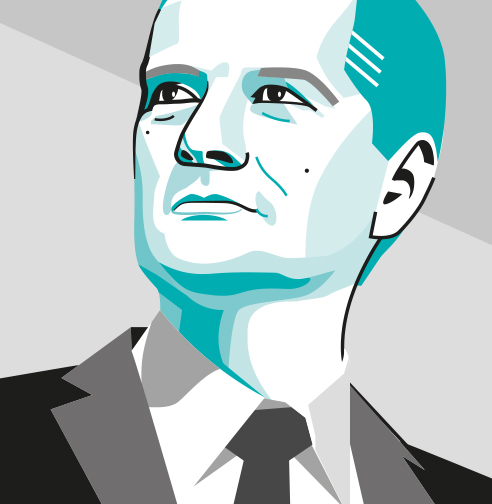
For those who may still have entertained any doubts, the year 2018
demonstrated once again that the digital threat is anything but
insubstantial and that challenges to the security and stability of
cyberspace remain immense.
More sophisticated, better planned,
more destructive and with an impact on the whole of society, from the
individual to big business to our democratic institutions, computer
attacks have entered a new dimension.
All connected, all concerned, all responsible: this is the fundamental
approach that we strive to bring to bear. Security has to come out of
its restricted field and involve all architects of the digital society.
For
beyond the threats to society, the economy, and the sovereignty and
stability of cyberspace, the very development of technologies is at stake.
Indeed, the impressive uses made possible by digital technology can
only be sustained if they are trusted by users.
Cybersecurity: more than a cost
This involves first and foremost a change in our outlook on cybersecurity.
It can no longer be considered a cost component or a kind of patch to
be applied at the end of the innovation process. Ask ANSSI's experts:
cybersecurity is in itself an exciting field of innovation, scientifically
rich and highly transdisciplinary, which brings together a wide variety
of players, both public and private, in France and abroad. It poses major
intellectual challenges for innovators of all kinds.
A challenge beyond the realm of engineering
How can future technologies, such as machine learning, connected
health, and quantum computing, be secured?
The field of autonomous
connected vehicles, which has experienced significant progress in
recent years, provides a good illustration of the overlapping of uses
and security requirements.
The presence of driverless cars on our
roads remains largely determined by pressing questions of trust and
social acceptability. And there is much that remains to be done: the
recognition system of these vehicles can still be easily fooled by a slight
alteration of traffic signs, leading them to confuse a stop sign with a
priority route sign.
These challenges naturally concern engineers, but also architects of
public policy, lawmakers and experts in international relations. What
can be done to achieve cyberspace stability?
Should we allow private
players to take justice into their own hands, to respond to attacks in
a context where businesses themselves have become “battlefields”? The
stability of cyberspace is a subject that is impacting political, diplomatic
and military habits. It brings up numerous issues along with exciting,
fascinating, structuring prospects.
Engineers, lawyers, designers, experts in public policy, and international
relations, ergonomists, start-ups, large groups, individual citizens –
digital security is definitely everyone's business.
"The stability of cyberspace is a subject that is
impacting political, diplomatic and military habits."

Technological innovations made possible by the recent spectacular
advances in materials science—touch screens, sensors, electronic components—
are everywhere around us.
The “wish list” for future innovations
is long and varied. To cite just two: we are looking for a non-toxic,
chemically stable and, of course, low-cost material that can be used as
a permanent magnet in electric car engines or in wind turbines; and we
are hoping to find materials to manufacture a battery that can store the
energy production of an entire photovoltaic farm.
But how are we to proceed? Are we to test each and every new chemical
compound, at the risk of losing our way? The ideal would be to develop
methods to predict the properties of materials based on a combination
of theoretical considerations and computations!
Digital technology for materials science
This is where condensed matter theorists from the Center for Theoretical
Physics come in. The development of numerical tools to describe the
properties of materials from “first principles”, that is, without adjustable
parameters, is precisely at the heart of our project, “Predictive electronic
structure calculations for materials with strong electronic correlations:
Long-range Coulomb interactions and quantum dynamical screening”,
funded by the European Research Council.
The task is not easy. The properties of materials are the result of a subtle
arrangement of their components, nuclei and electrons, and to understand
their magnetic, optical, or conductive properties requires solving
the equations of quantum mechanics that govern the behavior of their
constituents at the microscopic scale.
Electrons are by no means individualistic,
but interact strongly with each other. So we are dealing with
what physicists call a huge “quantum many-body problem.”
To make matters worse, the most interesting compounds are those most
impacted by the complex collective effects induced by the electrostatic
repulsion between electrons.
These materials are said to be “correlated”
because the behavior of an electron is dependent on that of all others.
More specifically, theorists at the Center for Theoretical Physics have
recently taken an interest in the retarded character of the repulsion
between electrons.
Indeed, when a charge is added to a solid, the
electrons rearrange in order to find a more stable position. This rearrangement
reduces the repulsion between two charges, but it is not
instantaneous. Thus, if an electron moves within the solid, it will be
followed by a sort of charge cloud that reduces its effective charge, but
at the same time makes it “heavier.”
Predicting and understanding the
properties of correlated materials with precision requires taking into
account this “dynamical screening”.
This can be done using methods
developed very recently at the Center for Theoretical Physics. Theorists
at the Center have performed numerical simulations on a dedicated
computer cluster and found, much to their great delight, that their results
matched up with measured experimental data!
These findings are a very promising step on the path to “first principles”
calculations.
On the horizon is the prospect of one day achieving
computer alchemy, even in the most difficult case; that of
correlated materials.

Digital data has become ubiquitous in scientific, industrial, and personal
spheres. Massive amounts of data of all types—text, image, sound,
video, internet browsing history, sensors, etc.—are part and parcel of
our lives.
New challenges driven by development
This data requires increasingly complex automated processing, beyond
indexing or simple statistical calculations, in order to recognize objects
in an image, for example, or translate a text from one language to another,
or predict which product to propose to customers.
For all these socalled
artificial intelligence tasks, which seemed too difficult for a machine
only a few years ago, current performances allow for widespread
use. Recent advances are due to significant increases in computing capacity
and in the volume of data, along with the development of new
algorithmic architectures in machine learning that capitalize on these.
Media hype aside, the development of artificial intelligence raises many
questions and new scientific issues. What are its limits? What interactions
will there be with other scientific disciplines? What are its future
industrial and social applications? What impact will it have on employment
and, more broadly, on people’s lives?
The French advantage
France will have its full place in tackling these challenges if it leverages
its chances.
At the scientific level, the education of French engineers is
world renowned and French research scientists are present at the top in
the various AI-related scientific communities.
However, the brain drain
to industrial sectors and academia abroad, mainly due to the comparatively
low salaries proposed to young researchers in France, poses a
serious threat to maintaining this excellence.
At the industrial level, there are few large French technology companies
of the FAAMG* type, but many start-ups and major world industrial
champions in all sectors of activity.
Harvesting the fruits of artificial intelligence
and thereby avoiding absorption by these technological giants
can only be achieved by engaging in a strategic reflection on the importance
of data in business, and not simply by elaborating a technical
approach to software solutions or equipment purchase.
In particular,
given the speed of technology transfer between university laboratories
and industry, it will require a massive recruitment of experts in artificial
intelligence. And, for this, doctoral degrees and competitive remunerations
are essential. This is something the FAAMGs* have understood
perfectly well.
"French research scientists are present at the top
in the various AI-related scientific communities"

The sharing economy has built a social network of trust founded on
data: when users of a collaborative service enter their personal information
– name, age, address, photo, etc. – they are entering into a relationship
of transparency, one that invites strangers to trust each other.
The more information they provide, the greater the trust and the more
they will transact.
This is the foundation which ensures open access to
a multitude of services: ridesharing, equipment borrowing, peer-to-peer
financing, house or skill swapping, etc. Trust is remarkably high within
collaborative ecosystems: according to a poll conducted by BlaBlaCar
among its members, the level of trust between users matches that of
family members and is far higher than the level between colleagues.
Such is the power of data!
This then triggers a second virtuous behaviour: users of collaborative
services, once they’ve grown accustomed to trusting strangers, will gradually
extend this instinct to other sharing activities.
It is easier to make
one’s home available to a stranger when one has already had experience
with the sharing economy, through carpooling, for example.
Digital stengthens social cohesion
This flies in the face of the mainstream notion that digital technology
damages social cohesion. To the contrary: in the collaborative economy,
it strengthens social bonds previously weakened by technological advancements.
This is because it puts interactions between people back at
the center of our everyday activities by making services conditional on
social encounters.
It redefines the way we are connected to each other
and reproduces, in larger communities, the circle of trust that we previously
shared on the scale of a village or association.
The two major issues of data
But trust needs a framework to exist. Data privacy scandals involving
major digital technology companies have generated growing distrust
among users. At a time when data has become the lifeblood of businesses
in the internet era, two major issues have arisen: on the one
hand, companies that collect data must be transparent about its security
and use, but on the other hand, users must have a clear and immediate
understanding of the added value that comes with the transmission of
their data.
These two conditions are imperative for companies to link data and
trust. If they are not met, there is a risk that access to consumer data
will be curtailed. Soon the issue of responsible data use by companies
may become a question of fundamental human rights in the digital era
for increasingly knowledgeable and recalcitrant users.
The fundamental question of online technology remains. For as long as
we don’t have large European technology platforms to write our own rules
governing data use and security, we will not be in charge of the game
–and this will be to the detriment of individuals and companies alike.
"Soon the issue of responsible data use
by companies may become a question of
fundamental human rights"
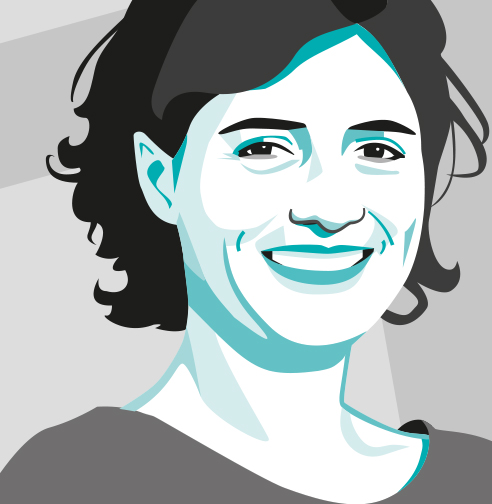
In the time it takes to read this entry, 20,000 objects will have been
connected to the internet around the world. That translates into 30 million
a day.
It is a massive transformation that is underway.
The Internet of Things began gaining momentum more than a decade
ago, under the “Machine to Machine” concept.
After the internet of
people, this second wave is picking up speed, with more than 50 billion
objects expected to be connected by the end of 2020, which amounts to
ten times more objects than people!
The scope of application is immense. In buildings, for example, hundreds
of objects and sensors are now connected, with digital technologies
being used to view, correlate, and manage.
Dynamic and intelligent
control of buildings radically changes energy use, putting the user
at the heart of the system. At the same time, the development of new
digital applications around digital architectural models facilitates the
coordination of all professionals, from design to maintenance, and revolutionizes
the entire industry.
The digital transformation of objects will have structuring implications
for the world of tomorrow, be they economic or social, some of which
are not even conceivable today! We would have to imagine the intersection
of every type of application, existing or to be developed, by micro-
market segment to begin to glimpse the immensity of this systemic
revolution. Without forgetting the implications for the security of the
people and goods that are connected to it.
Take the example of the 4th industrial revolution: after the automation
of production, it is now the exploitation that is being transformed
thanks to the analysis of data collected on the machines, as well as the
traceability of products and materials through the different production
chains.
Marked by artificial intelligence, the industrial world of tomorrow
–or should I say of today– will accelerate the revolution of supply
chains, personalized production, and improvements in the safety of
people.
Machines on production lines are now connected, responsive
to their environment, capable of adapting, flexible and communicating.
This is paving the way for an industry that respects the environment
and people.
To be sure, the Internet of Things is a combination of multiple technologies,
but it also opens up possibilities that we didn’t imagine along
with new responsibilities.
It changes our economy and our way of
perceiving the world. Our way of working will move towards greater
transversality, more collaboration, with platforms, start-ups, and actors
from all horizons.
It changes the way we make decisions along with management
methods, which become more responsive and flexible. And
it is the people behind the technology who must grasp the opportunity
of the Internet of Things to accelerate the revolutions it allows, be it in
terms of energy transition or simply to create the working methods of
the future.
"The digital transformation of objects
will have structuring implications
for the world of tomorrow"